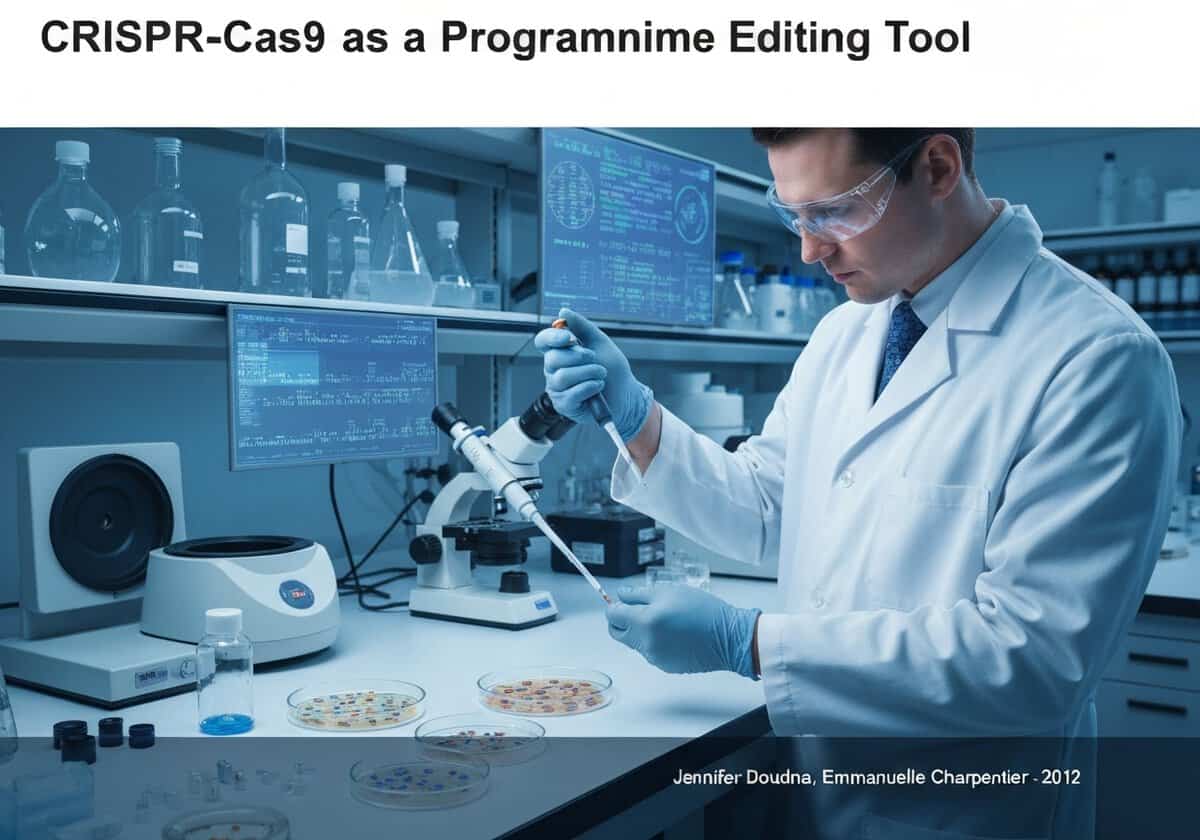天然的 CRISPR-Cas9 系统被重新利用,成为一项革命性的基因编辑技术。通过将两种必需的 RNA 成分(crRNA 和 tracrRNA)融合成一个合成的单向导 RNA (sgRNA),科学家创建了一个简单的双组分系统。该 sgRNA 引导 Cas9 核酸酶到达任何所需的 DNA 位置,从而造成精确的双链断裂,然后细胞可以修复该断裂,从而引入靶向突变或插入新的遗传物质。


天然的 CRISPR-Cas9 系统被重新利用,成为一项革命性的基因编辑技术。通过将两种必需的 RNA 成分(crRNA 和 tracrRNA)融合成一个合成的单向导 RNA (sgRNA),科学家创建了一个简单的双组分系统。该 sgRNA 引导 Cas9 核酸酶到达任何所需的 DNA 位置,从而造成精确的双链断裂,然后细胞可以修复该断裂,从而引入靶向突变或插入新的遗传物质。
The transformation of the CRISPR-Cas9 bacterial immune system into a universal tool for genome editing was a landmark achievement in molecular biology. The key insight was recognizing its potential for being reprogrammed. In its natural form, the Type II system uses three components: the Cas9 protein, a crRNA that contains the targeting sequence, and a tracrRNA that is crucial for crRNA maturation and Cas9 activation. The Doudna and Charpentier labs demonstrated that this system could be simplified. They engineered a single chimeric RNA, which they termed a single-guide RNA (sgRNA), by linking the 3′ end of the crRNA to the 5′ end of the tracrRNA with a synthetic hairpin loop. This sgRNA retained all the necessary functions of the dual-RNA system.
This simplification was revolutionary because it meant that to retarget the Cas9 nuclease to a new DNA site, one only needed to synthesize a new sgRNA with a different 20-nucleotide guide sequence. This made the technology remarkably easy to use, cheap, and scalable compared to previous editing methods like Zinc Finger Nucleases (ZFNs) and TALENs, which required complex and costly protein engineering for each new target. When the Cas9-sgRNA complex is introduced into a cell, it locates its target DNA sequence and creates a double-strand break (DSB). The cell’s natural DNA repair machinery then takes over. The error-prone Non-Homologous End Joining (NHEJ) pathway often introduces small insertions or deletions (indels), effectively knocking out the gene. Alternatively, if a donor DNA template is supplied, the more precise Homology-Directed Repair (HDR) pathway can be used to insert new sequences or correct mutations.
迎接新挑战
机械工程师、项目、工艺工程师或研发经理
可在短时间内接受新的挑战。
通过 LinkedIn 联系我
塑料金属电子集成、成本设计、GMP、人体工程学、中高容量设备和耗材、精益制造、受监管行业、CE 和 FDA、CAD、Solidworks、精益西格玛黑带、医疗 ISO 13485
CRISPR-Cas9 作为可编程基因编辑工具
(如果日期不详或不相关,例如 "流体力学",则对其显著出现的时间作了四舍五入的估计)。
相关发明、创新和技术原理
{{标题}}
{%,如果摘录 %}{{ 摘录 | truncatewords:55 }}
{% endif %}